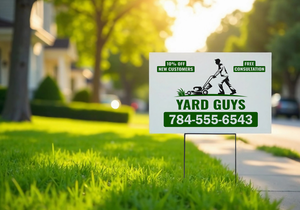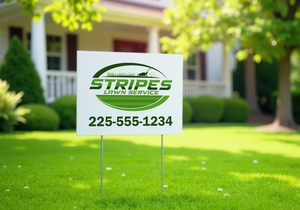What’s in a Label: Must-Have Info for Food Labels

A food label isn’t just a sticker—it’s your product’s first impression, legal wingman, and trusty information guide all rolled into one. By law, your label needs to include the product name, net weight, ingredient list, allergen info, and nutrition facts. These details aren’t optional—they’re there to help customers make informed choices and keep your brand on the right side of the rules.
But let’s be real—food labels can do so much more than just check legal boxes. A standout label showcases your brand, flaunts your product’s best features, and grabs attention in that sea of choices on the shelves.
Here’s the scoop on how to create food labels that play by the rules, turn heads, and earn your customers’ trust.
What Needs to Be on Food Labels?
Every food label must meet specific legal requirements to ensure transparency and compliance. Here’s a breakdown of the must-haves:
- Product Name: Be clear and specific. For example, “Spicy Chipotle Hummus” gives customers more information than just “Hummus.”
- Net Weight/Volume: Let customers know exactly how much they’re getting, using both metric (grams, liters) and imperial (ounces, pounds) units.
- Ingredient List: List all ingredients in descending order by weight. Avoid complex jargon—customers appreciate clarity.
- Allergen Information: If your product contains common allergens (like nuts, soy, or dairy), make sure this is clearly displayed.
- Nutrition Facts Label: Include essential details like calories, serving size, and nutrients (fat, protein, carbohydrates, etc.).
These elements make your product legally compliant and easy to understand, giving customers confidence in your food products.

Creative Ways to Make Food Labels Stand Out
Once the basics are covered, it’s time to get creative. A strong design can help your custom food labels grab attention while showcasing your brand’s unique personality.
Here are some tips for designing standout labels:
- Use Colors That Match Your Brand: Earthy greens and browns are perfect for organic foods, while bright yellows and reds work well for snacks and treats.
- Highlight Key Features: If your product is “Gluten-Free” or “Keto-Friendly,” make it stand out with icons or bold text.
- Showcase Your Story: Share something personal about your product, like where the ingredients come from or what inspired the recipe.
A great design isn’t just about looking good—it helps customers connect with your product and feel confident about what they’re buying.
Packaging and Placement Matter
Your food packaging plays a big role in how your product is perceived. A well-placed label on thoughtfully chosen packaging can make your product feel professional and appealing.
Tips for Great Label Placement:
- Shape and Size: Match your label to your packaging—use circular labels for jars or wraparound labels for bottles.
- Durable Materials: Waterproof or freezer-safe labels are ideal for products that will be refrigerated or frozen.
- Easy Readability: Make sure the label is placed where customers can see it clearly without having to pick up the product.
Smart placement and durable materials ensure your custom food label stickers stay in great shape, even during shipping or refrigeration.

Why the Nutrition Facts Label Builds Trust
The nutrition facts label is a key part of your food label, especially for health-conscious shoppers. It provides the transparency customers want and helps them make better choices.
What to Include:
- Calories and Serving Size: These are the most-searched details on any label—make them prominent and easy to find.
- Nutrients: Include fats, carbohydrates, protein, and vitamins/minerals. Highlight any standout benefits, like “High in Fiber” or “Low in Sugar.”
- Straightforward Design: Use clean, simple layouts to keep the nutrition section easy to read.
Transparency builds trust, and trust builds customer loyalty—two essentials for a thriving food brand.
Why Great Food Labels Matter
Your food label isn’t just a legal must-have—it’s the handshake that introduces your product to the world. A killer label grabs attention, builds trust, and tells customers why your product is the one to grab off the shelf.
With bold designs, clear info, and a touch of creativity, custom food labels can make your product pop—whether you’re selling tangy BBQ sauces, homemade jams, or crunchy snacks. Plus, a standout label shows you take pride in what you’re putting out there, helping to turn first-time buyers into loyal fans.
And yes, labels also need to play by the rules. From ingredient lists to allergen disclosures, they’ve got to cover the legal basics. Not sure where to start? Check out the FDA’s guide to food labeling requirements to make sure your labels are in the clear.
Ready to create labels that are as amazing as what’s inside your package? With our custom food labels, it’s easy to design something that checks all the boxes—and then some. Let’s make your product shine!
FAQs About Food Labels
What are FDA packaging and labeling requirements?
The FDA requires food labels to include the product name, net weight, ingredient list, allergen information, and a nutrition facts label. These elements ensure your product is compliant and provides transparency for customers. Each piece of information helps buyers make informed decisions about your packaged food while ensuring your product meets legal standards.
How can I make my food labels more appealing?
Use bold colors, clear fonts, and highlight unique features like “Organic” or “Gluten-Free.” Adding a story or a tagline can also help customers connect with your brand.
What materials work best for food labels?
Waterproof or freezer-safe labels are great for refrigerated products, while durable paper-based labels work well for shelf-stable goods.
Can custom food label stickers work on all types of packaging?
Absolutely! Custom stickers can be tailored to fit jars, boxes, bottles, or pouches—just make sure they’re the right size and securely placed.
Why is the nutrition facts label so important?
It provides customers with vital information about your product’s contents and builds trust, especially for those who are health-conscious or tracking their diet.
- Nashira Edmiston
















